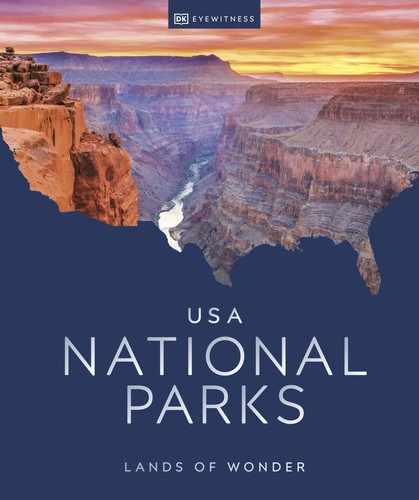
Nevada
GREAT BASIN
ESTABLISHED 1986
Great Basin National Park is Nevada’s wild jewel—its many facets coming together to create one exquisite gem. Wander caves deep underground before coming into the light to ascend a mountain covered in some of the world’s oldest known living trees.
This park presents a Nevada that most wouldn’t recognize—worlds away from the bright lights of Vegas and the “Biggest Little City in the World,” Reno. On the eastern state line lives a Nevada that is savage wilderness, where the world’s oldest tree species survives in a vital ecosystem rarely seen elsewhere on the continent.

The fantastic limestone formations inside the Lehman Caves can be seen on various tours
Basin life
The ancient Great Basin is made up of 90 small basins, which feed into the system, rather than out of it, as most bodies of water do. Along its slow march, the water collects in salt lakes, marshes, and mudflats, which support an array of animal and plant species. The geologic dynamics that formed the basins also created the most mountainous area in the contiguous United States, as old as the Ice Age. Rising to the top is Wheeler Peak, at 13,063 ft (3,982 m), where the Fremont and later Shoshone Indians once hunted high in the hills. It is here that you’ll find bristlecone pines, with their thick, twisted trunks rooted in the harsh land.
Seas to sediment
Another prized feature in the park are the Lehman Caves, their grand marble caverns filled with limestone stalactites and stalagmites, drapes, cave popcorn, and a collection of rare “shields.” Known as limestone solution caverns, they began forming around 600 million years ago when shallow seas covered what is now Nevada. Tucked inside the Snake Range, the caves were discovered in the mid-1880s by a miner-turned-rancher named Absalom Lehman. He became a passionate advocate for the park and inspired the first set of laws protecting it in 1922.
![]()
Capture a great long-road shot on Highway 50, which runs from California to Maryland. The road is surrounded by sprawling mountain views as it courses through Nevada.
Great Basin offers year-round pleasures. Trout fishing is popular during the spring snowmelt, while in summer thunderstorms swirl in the wild skies above. In fall, gather delicious pinyon pine cones, and when winter comes, don snowshoes or skis to explore a peaceful landscape cloaked in snow.
The Bristlecone Pine Tree |
|
|
Atop glacial moraines at subalpine altitudes live ancient bristlecone pines. In a frigid climate with little oxygen, the trees grow at a snail’s pace. Their density shields them from infection and rot, aiding longevity. |
|
|
Nearly 5,000 years ago, a tree that would later be given the moniker Prometheus by Great Basin mountaineers began to form on top of Wheeler Peak. |

|
|
In 1964, a geographer named Donald R. Currey was conducting research on ice-age glaciology and received permission by the US Forest Service to sample the 4,862-year-old tree. |

|
|
It is believed that the sampling, which involved boring into the tree to extract rings, caused it to die, and Currey was given permission to cut Prometheus down. |

|
|
The stump of Prometheus is all that’s left, that and a ringed slice in the visitor center. In 2012, a bristlecone pine in the same area proved to be older still—age 5,065. |

|
|
Today, what is believed to be the second-oldest living tree, Methuselah, stands in California’s White Mountain Range. Also a bristlecone pine, it is over 4,800 years old. |

|

A splash of orange and yellow aspen trees contrast with the stark Wheeler Peak in the background
